Archive for the ‘Afro-Latino’ Category
http://www.ricfrancis.net
Worldwide the identities of women, children and men are constructed around lies associated with being “Other.” These lies call into question their humanity and eliminates the identity of the individual.
I grew up as Other in the United States and since my departure, in February 2009, I have felt far freer in foreign lands than I ever felt at home. Specifically, in East and Central Africa, I’m recognized as Other based on my country of origin as opposed to my dark skin. Hence, there are no adjectives associated with my existence when people view me; I’m a man as opposed to a black man. Before Africa, my journey took me to various countries in South America where the dynamics of being black can be problematic. However being American provided a measure of protection against being looked down upon.
In childhood my orientation as Other began when I was questioned and searched by two overzealous white cops in my hometown, Harlem, New York – it was an unpleasant and senseless experience; I was ten-years old but looked younger because I was very skinny. Little did I know then that as an adult I would be racially profiled while driving in every city I worked: New York, New Jersey, New Orleans and Los Angeles. On one such stop a white police officer, in response to my voice, asked with an incredulous tone, “did you go to college or something?”
As a pedestrian, on a couple of occasions, my presence caused drivers to lock their doors and roll-up windows, and white women to clutch their handbags. I looked at them and shook my head while marveling at the ability of such Americans to ignore a fact: historically it has been blacks who have had to fear whites – innocent blacks have suffered physical and psychological harm by white Americans and are brutally overpoliced.
In an era when political discourse is increasingly characterized by xenophobic policies and woeful ignorance, people whose humanity is challenged based on such otherness labels as refugee, immigrant, Muslim, transgender, black, Latino – nonwhite – are at odds to find acceptance. And why? Well, it has much to do with a failure of white people to police their fears. However, the true problem isn’t fearful and malicious conservatives, as Dr. Martin Luther King, Jr. articulated: “In the end, we will remember not the words of our enemies, but the silence of our friends.” Thus, it cannot be overstated that to be silent in the face of how Others are demonized is to contribute to a lie.
The last eight-plus years have taught me how to comfortably embrace my otherness – the difference that I represent – and move beyond documenting stories that give credence to unchallenged mainstream opinions. The novelist Chimamanda Adichie gave a Ted Talk in which she warned, “if we hear only a single story about another person or country, we risk a critical misunderstanding.” Indeed, no people (or country) are one thing. It’s important to note, there’s a beauty to being Other when we appreciate differences and strive to be conscious of life’s complexities, and the situations Others are born into.
The following photographs are simple moments that characterize the daily lives of women, children and men who are often narrowly defined. These are wonderful individuals who permitted me to share in their lives:

Mutonya Village (Butiiti Parish – Kyenjojo District), Uganda – Kabahuma Esther, 18, plays with her son, Kazora Titaus, 8-months.
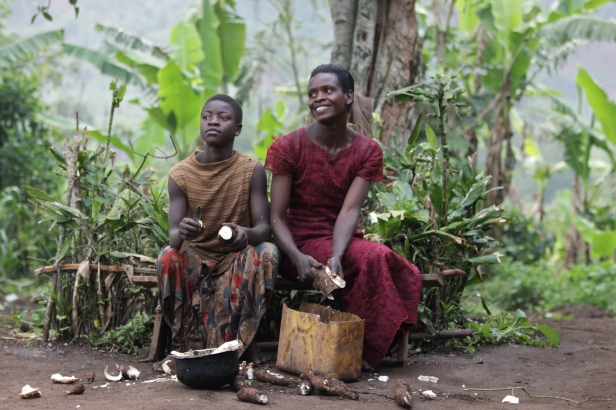
Nyakahama Village (Katoosa Parish), Uganda – Rose Mbabazi, 20, right, and her niece, Revecart Kengonzi, 12, peel cassava grown in their garden.
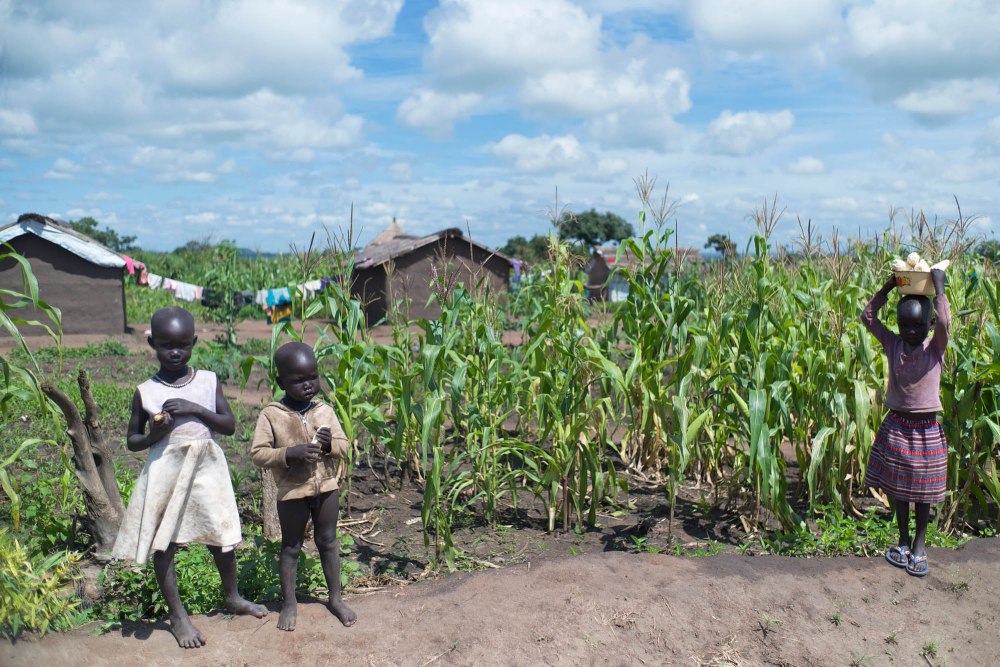
Adjumani district (Ayilo Resettlement Camp), Uganda – Three South Sudanese children stop along a road which runs parallel to a field of maize grown by their parents.
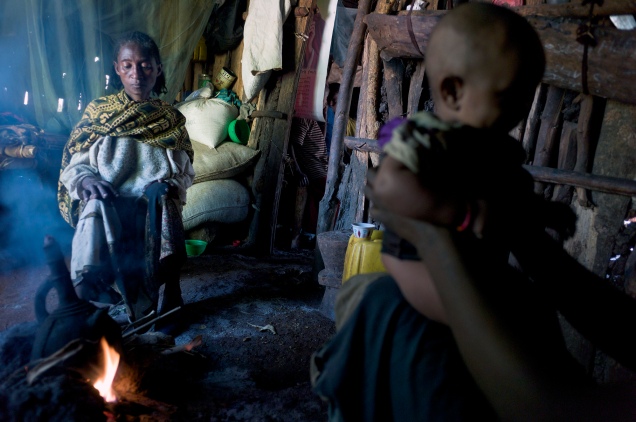
Debeka Village, Ethiopia – Gumi Ayantu, 45, brews freshly roasted Ethiopian coffee beans in a Jabena (a boiling pot made of pottery). On the right her grandchild is entertained by a family member.

Katooke Town Council (Kyenjojo District), Uganda – Imelda Gafabusa, 70, exhausted from working in her field, falls asleep near her front door while waiting for heavy rains to end.

Tocana, Bolivia – Juana Vasquez, 71, heads home after picking coca leaves in the lush hills of the Yungas Valley; a tiny community made up mostly of Afro-Bolivians.
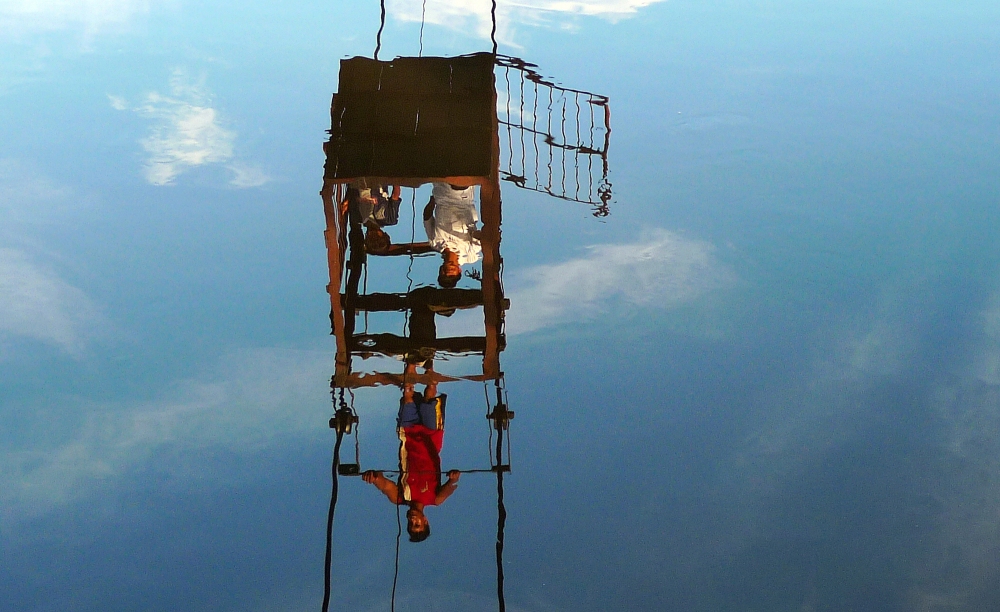
Bagua province (north Amazon), Peru – Gilmer Ugkaju Intakea Edad, 20, bottom, an Awajun, ferries passengers across the Chiriaco river.
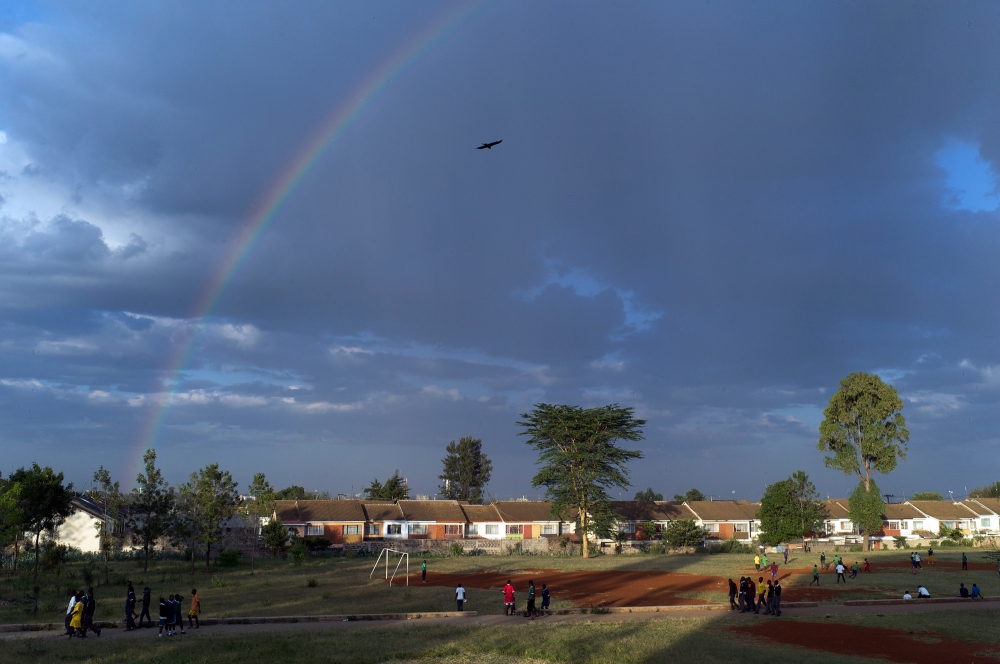
Langata (a suburb of Nairobi), Kenya – A rainbow paints the sky.

Ayachucho, Peru – Children enjoy lunch.
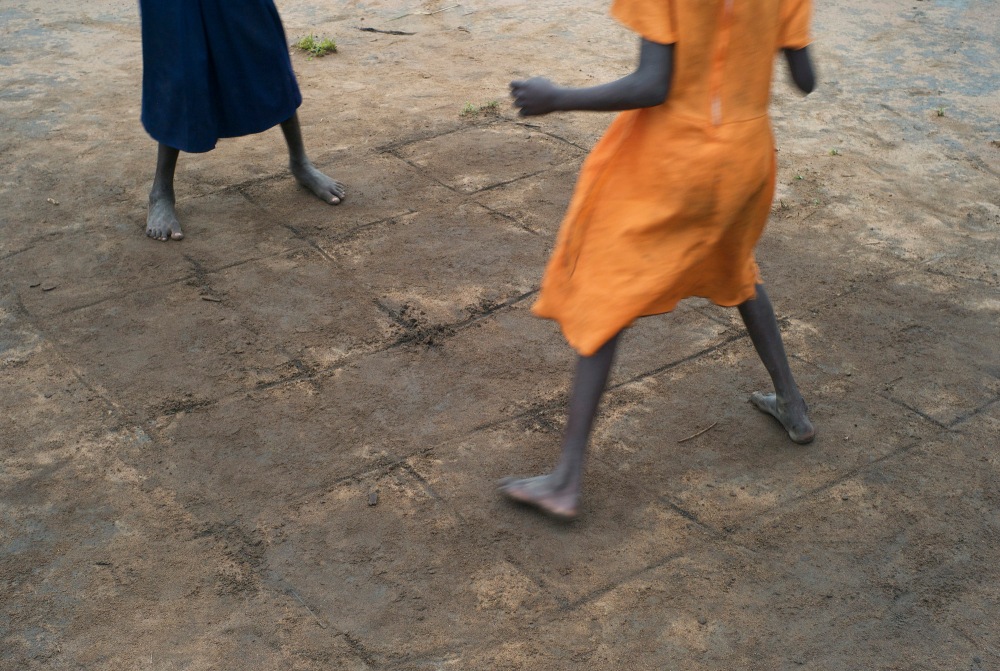
Adjumani district (Ayilo Resettlement Camp), Uganda – South Sudanese children play a game called “Father or Mother,” which involves hopping around a grid.
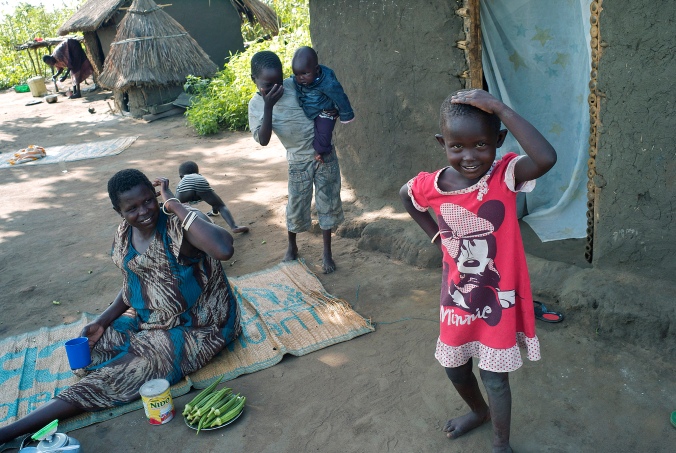
Adjumani district (Ayilo Resettlement Camp), Uganda – Helen Agok Ageri, 5, candidly strikes a pose bringing her family to laughter.
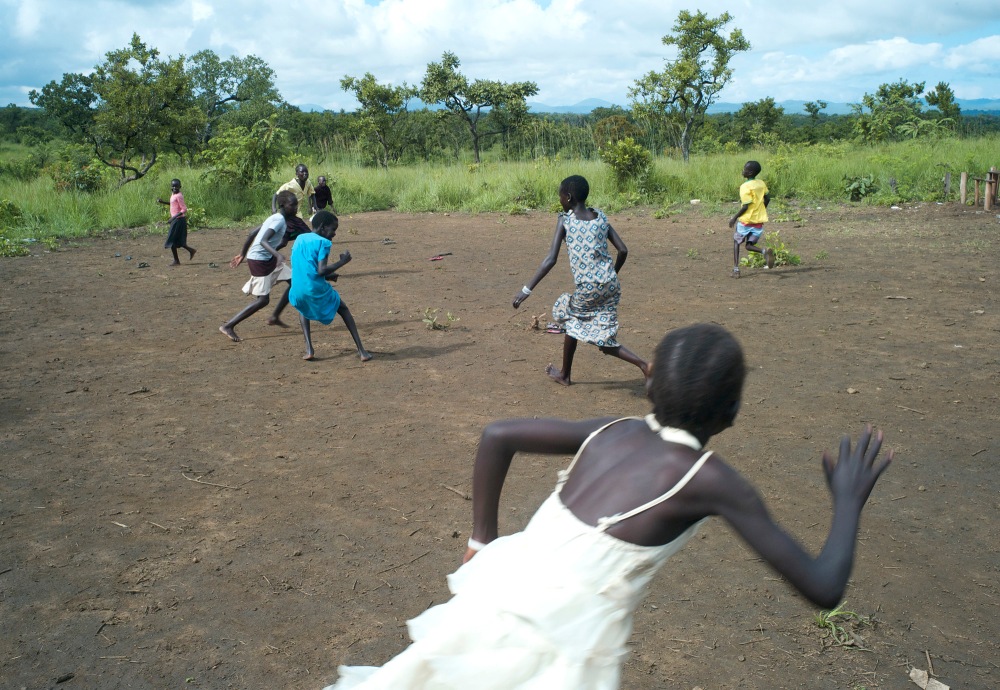
Adjumani district (Ayilo Resettlement Camp), Uganda – A group of South Sudanese girls play a game called “Sikadibaba,” that revolves around chasing and tagging.

Mutonya Village (Butiiti Parish – Kyenjojo District), Uganda – Angela Kabahenda, 21, prepares two of her children, Marian Nabbumba (six-years), right, and Junior Mayalla (four-years), left, for school.
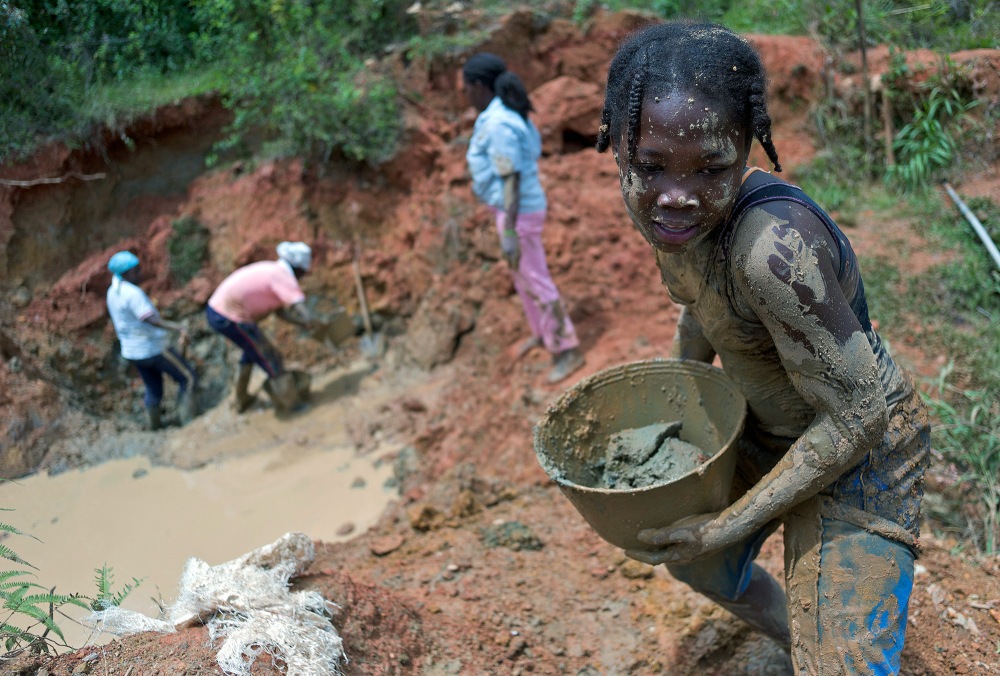
La Toma, Colombia – Margie Cecilia, 11-years old, labors for gold with family members at an open-pit mine.

Nyanza district, Rwanda – After an extended peroid of walking and standing Gasaza Siliveri, 97, sits and rests before going out for a scheduled trip.

Nyakahama Village (Katoosa Parish), Uganda – Rose Mbabazi, 20, surveys her garden while picking carrots and sweet potatoes.

Tocana, Bolivia – An Afro-Bolivian girl washes her hair.
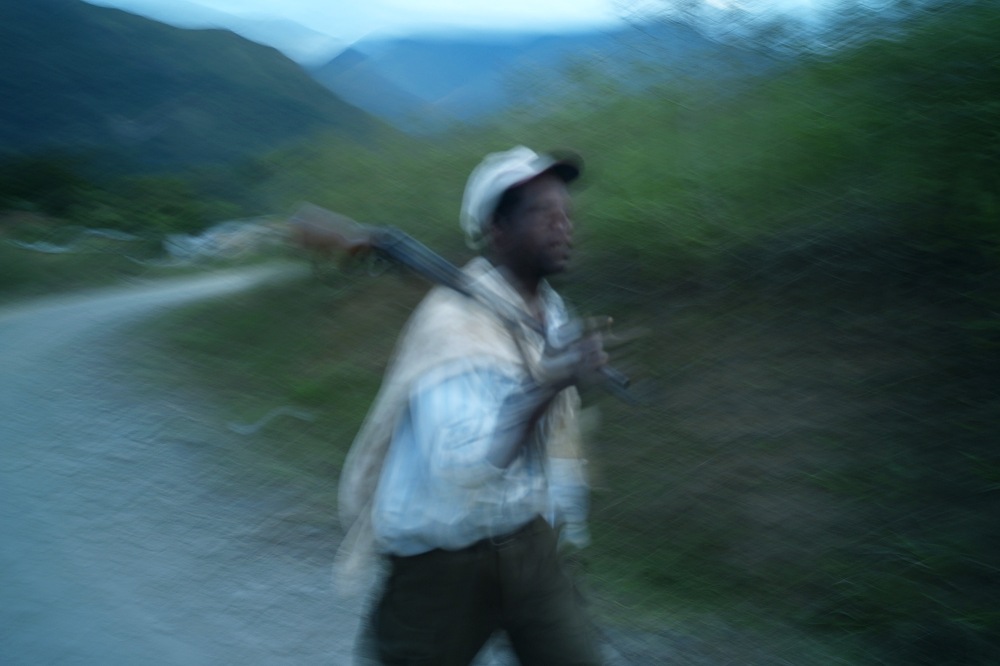
Tocana, Bolivia – An Afro-Bolivian man returns home from hunting.

El Carmen, Peru – Peruvians participate in a procession honoring Our Lord of Miracles (Senor de los Milagros). It’s a widely attended religious event.
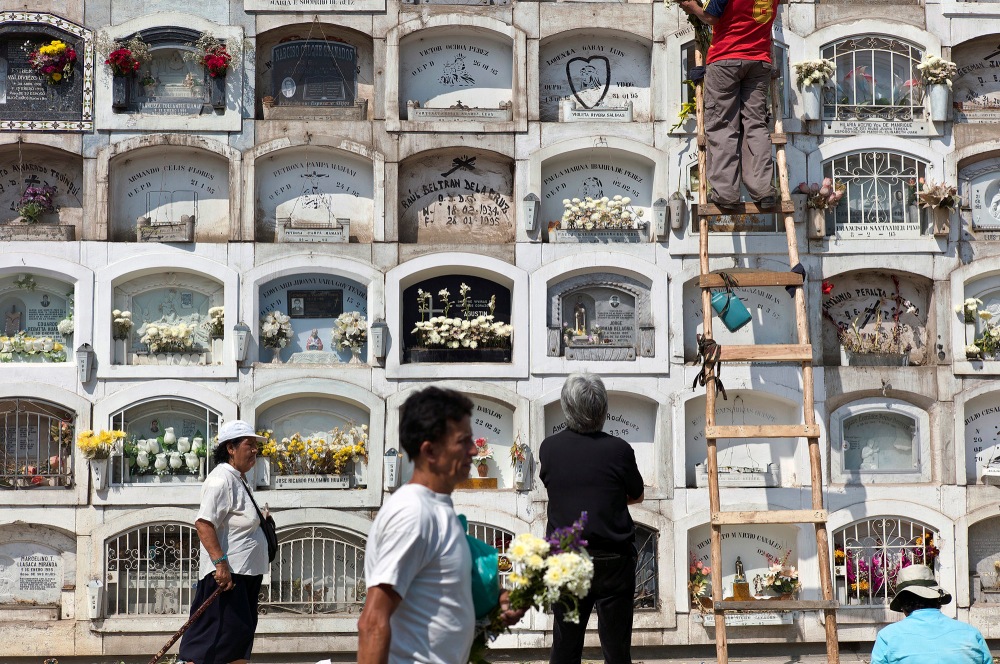
Lima, Peru – Peruvians place flowers and clean their mother’s hard-to-reach burial sites, at The Angel Cemetery, on Mother’s Day.

Nairobi (Kilimani), Kenya – Muslims pray at a mosque.

Nairobi, Kenya – A Kenyan woman carries basins and buckets to collect water in the community of Mathare.
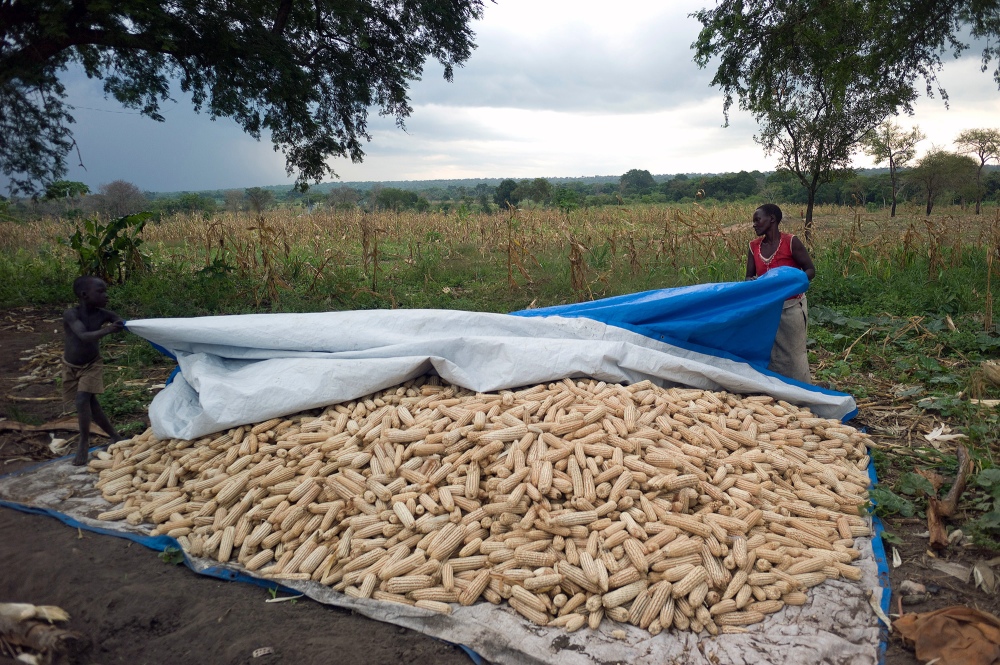
Obira Village (Nwoya District), Uganda – Timo, 9, (he has no last name because he has not been baptized yet) helps his mother, Joyce Pacoryema, 42, cover their family’s maize with a tarp; it’s about to start raining.

Yapatara, Peru – In the northern section of the country several Afro-Peruvian men play cards.
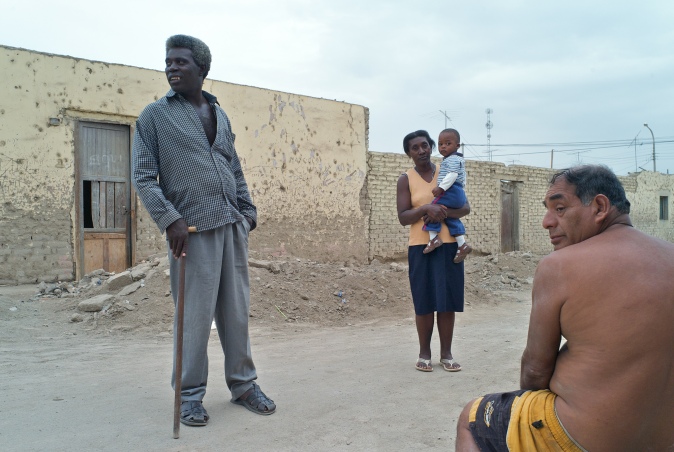
El Carmen, Peru – Neighbors relax in their communty.
http://www.ricfrancis.net
http://www.ricfrancis.net
La Toma, Colombia (in the Suárez municipality of north Cauca) is a predominately Afro-Colombian community of approximately 1,400 families. Following in the tradition of their enslaved ancestors who settled in the area in 1637, the vast majority of its citizens earn a living through small-scale gold mining.
While working on a photo-documentary project about the community, I joined several miners as they made their way up and down muddy and very steep slopes on their way to work. Occasionally we passed through the front or back yard of a neighbor’s home, where we were greeted with offers of fruit or cold drinks. Eventually we arrived at a watered-down open-pit gold mine where women, men and children defied the difficult terrain and easily maneuvered while hauling rock and soil. This combined with their use of sledgehammers to smash large rocks is back-breaking work, which they performed without complaint. At this particular site there are seven workers, all family members, and they range in ages between 14 and 66. At one point several in the group form a relay line and toss buckets filled with soil and small rocks from one to another; as a full bucket is thrown an empty one is simultaneously returned. They chatter constantly and the air is often punctuated with laughter. They enjoy the camaraderie and seemingly the work too.

The landscape of the La Toma region is scenic as it is marked by mountains, valleys, brilliant blue skies and small simply-built homes. There’s a simplicity to life that the residents wholeheartedly embrace: enjoy the fresh air and resources of the land, work hard and stick together as a community. However the very resource (gold) that makes life possible now threatens their existence. Outside business interests are looking to capitalize on the wealth of the land. The community was threatened with eviction after the Colombian government granted a mine exploration permit to a Colombian businessman. The Afro-Colombian community refused to vacate the land. A key argument on the community’s behalf was that the government made promises to the Inter-American Commission on Human Rights (in 2009), to review mining permits it granted to third parties without the previous consent and consultation of the La Toma Community Council.
Francia Marquez, 29-years old, a member of the La Toma Community Council and an activist stated, “Gold mining provides us a way of maintaining financial independence. Our lives revolve around mining activity and life as we know it has been complicated by the foreign transnational companies, which are interested in exploiting our land.” According to Ms. Marquez, the Colombian government has never invested in developing the communities around La Toma; the community council of La Toma is comprised of five communities, i.e., Yolombo, Dos Aguas, Gelima, La Toma and El Hato. “Left to fend for ourselves we continued to work in the mines, as did our ancestors. The government now claims the right to exploit the minerals in the subsoil and said we must leave,” added Ms. Marquez. The recent tense standoff came to an end when Colombia’s constitutional court suspended mining titles to outside mining interests.
Despite the victory the community remains under threat of displacement; they are aware and wary of the appeal of their land to industrial gold mining corporations. In recent years the Colombian government has issued 7,500 mining exploration titles to mining companies (both foreign and domestic). Many of the titles have infringed upon the rights of communities like La Toma where residents put up a sustained protest. As a result of their opposition, according to community leaders, several residents received death threats in the form of emails and text messages signed by a paramilitary group called Aguilas Negras (The Black Eagles). In November 2009, Ms. Marquez got an ominous visit from unknown men at her mother’s house at 2:00 a.m. Ms. Marquez explained, “my mother answered a knock at the door and a man asked for me. My mother told him I was in nearby Cali (she lied, I was inside). She asked him what did he want with me. He said it’s for a job. A job a 2:00 a.m., she asked. She knew he was lying. She went on to inquire about the men who accompanied the stranger. He stated they were just some guys. My mother feared they were going to find and kill me. Fortunately they went away.”
 There have been killings of miners and local activists which residents attribute to the mining conflict. The area is a haven for violence given the activity of paramilitary and guerrilla groups. The Colombian national police patrol constantly in the streets and market of nearby Suárez, where community meetings often occur; they project an intimidating presence in their jungle uniforms and automatic weapons. Nevertheless, the market area bustles with activity as people board buses and shop for food while merchants blare music from their storefronts, especially on Sundays. Several locals mentioned that, for now, life has returned to normal.
There have been killings of miners and local activists which residents attribute to the mining conflict. The area is a haven for violence given the activity of paramilitary and guerrilla groups. The Colombian national police patrol constantly in the streets and market of nearby Suárez, where community meetings often occur; they project an intimidating presence in their jungle uniforms and automatic weapons. Nevertheless, the market area bustles with activity as people board buses and shop for food while merchants blare music from their storefronts, especially on Sundays. Several locals mentioned that, for now, life has returned to normal.
It remains to be seen if the suspension of mining titles to industrial mining interests will be sustained. The gold-rich land is both a blessing and a curse to the community of La Toma. The U.S. Congress approved the free trade agreement with Colombia during my visit. Ms. Marquez and others were quite vocal with disapproval of the agreement saying, “it doesn’t help us, it violates our rights.” They fear the agreement will encourage exploitation of their land by their government and outsiders.
Unquestionably the land is rich in gold. It has sustained Afro-Colombians for generations. Maintaining the rights to the land could prove to be difficult as the shadow of corporate interests continues to linger over La Toma. Having lived on the land for well over 300 years, the Afro-Colombian community views their potential displacement as a human rights as well as a territorial issue. The consequences of a forced removal would be disastrous to the way of life their ancestors pioneered. “We will remain vigilant to new threats. Our enslaved ancestors worked these lands, so will our children. We’ll never leave,” said Ms. Marquez.
Additional photographs from this story can be viewed at http://www.ricfrancis.net.
See “Afro-Latinos in the Andes:” http://www.ricfrancis.net
Lima, Peru – While working as Camalenque, Eduardo Castillo answers his cellphone as his brother Victor Castillo struggles under the weight of a heavy coffin.
Camalenque are Afro-Peruvian men who are highly sought to carry coffins at the most upscale funerals in Peru. Clad in tuxedos and white gloves they are hired under the belief that their skin-color lends an aura of elegance to the job. In Peru, where racism against blacks and indigenous natives is strong, dark skin is not only used to exclude but to symbolize servitude. In May 2010 Peru’s Ministry of Culture denounced the practice of the Camalenque as racist and requested – to no avail – that the mortuary business end the service.
Additional photographs from the Camalenque photo story can be viewed at www.ricfrancis.net.
See “Afro-Latinos in the Andes:” http://www.ricfrancis.net

From colorfully dressed Afro-Bolivian women in bowler hats working in coca fields to Afro-Colombian children toiling in small-scale gold mining pits, Afro-Latinos exist actively, if not always visibly, in the Andean region. Their history has been cloaked by a legacy of invisibility as governments often fail to mention the participation and contributions of Afro-Latinos to the region; racism is common.
Their numbers in Peru, Bolivia, Ecuador, Chile, Argentina, Uruguay and Paraguay are small. Peru, Bolivia and Ecuador best represent the reality of invisibility and racism because they have significant percentages of Afro-Latinos in comparison to Argentina, Chile, Paraguay and Uruguay. In Peru, Bolivia and Ecuador Afro-Latinos make up approximately five, two and ten percent respectively of their country’s populations.
Many people are quite familiar with Afro-Latinos in Colombia or Brazil, but often are unaware of Afro-Latino communities elsewhere in South America. I recall speaking with an American journalist in 2008 and mentioning my interest in documenting Afro-Bolivian and Afro-Peruvian communities. He responded, “I didn’t know there were blacks in Peru and Bolivia.” Afro-Latinos represent the ‘Unexpected Faces’ of South America.
While Latinos in the region will praise the musical and culinary contributions of Afro-Latinos, they often revile dark skin. My arrival to the Andean region, in February 2009, was the start of a journey into the lives of Afro-Latinos who were struggling to have their problems and, in some cases, their very existence acknowledged. This was perhaps best symbolized in Bolivia where the government had always denied the existence of Afro-Bolivians. It was in 2009 that Bolivian president Evo Morales formally acknowledged the existence of Afro-Bolivians. It was also in 2009 that then Peruvian president Alan Garcia held a public ceremony to apologize to Afro-Peruvians for centuries of “abuse, exclusion and discrimination.” Hitherto, the Peruvian government had a policy that proclaimed the equality of all its citizens was written into the constitution, and consequently racism did not exist. By stating everyone was equal it permitted Peruvian policy-makers to deny historic discrimination and the resulting differences in status and development.
Although my work has concentrated on Afro-Latino communities in Peru, Bolivia and Ecuador, I’ve also documented blacks in Argentina and Colombia. I’m based out of Peru so I’m most familiar with Afro-Peruvians. While Afro-Peruvians can be quite vocal about the stigma associated with being black, seemingly there’s no consensus on how to collectively respond to it. In the Andean region the fact that racism was never institutionalized, as it was in the United States during the Jim Crow era, ensures that Afro-Latino’s fight for equality is unlikely to ever be confrontational, as experienced by African-Americans.
The reality of Afro-Latinos recalls that of African-Americans who challenged racism during the civil rights movement. Unlike the situation in the U.S., the struggle in the Andean region is devoid of protesters engaged in lunch counter sit-downs (although it’s not uncommon for Afro-Peruvians to be denied service at high-end establishments), or confrontations with police officers armed with batons and attack dogs, which were aired nightly on the news. Although it’s a different place, people and era, it’s the same battle – overcoming racism.

Generally speaking there is a lack of sensitivity in South America to negative depictions of Afro-Latinos. From dolls with exaggeratedly dark black skin and big red lips to a young white-Latino girl in black face masquerading as a prostitute, while she solicits tourists for money, Afro-Latinos are often the source of mockery. Racial stereotypes are reinforced daily in the media and on television, e.g., in Peru there’s a popular comedy show character called ‘Negro Mama.’ He’s a grotesque caricature of a black man who’s ignorant and dishonest, played by an actor in black face with a false nose and lips. I document these negative stereotypes to serve as a counterweight to the general South American denial of race as an issue; the lack of an open dialogue on race has contributed to Afro-Latinos being visible in a negative manner. Sadly, in the 21st-century the present generation must overcome images that could impact heavily on their self-esteem.
While race can be used to exclude it is also used to symbolize servitude: Afro-Peruvian men are highly prized for jobs as hotel and casino doormen – in elegant colonial uniforms with top hats – and as pallbearers (a vocational identity known as Camalenque) – dressed in formal attire at upper-class funerals – under the belief that their dark skin adds an aura of elegance to such occupations. In May 2010 Peru’s Ministry of Culture denounced the practice of the Camalenque as racist and requested, to no avail, that the mortuary business end the service.
When the idea for ‘Unexpected Faces’ first came to me the intention was to document the existence, uniqueness, and diversity of Afro-Latino communities in the Andean region. Early on I recognized the problems Afro-Latinos faced and that the issue of discrimination was integral to their story. Theirs is a multifaceted story on the complexities of race, cultural diversity and the embracing of traditions which create a sense of pride and self-awareness.
‘Unexpected Faces’ is an ongoing documentary project that hopes to show how the treatment of Afro-Latinos raises questions about the intellectual, cultural and moral refinement of civilization in South America. The people, governments and media of the region need to understand they will never attain an advanced state of social development until they become an inclusive society.
Photos from Unexpected Faces (and related pics) can be viewed at http://www.ricfrancis.net.





























